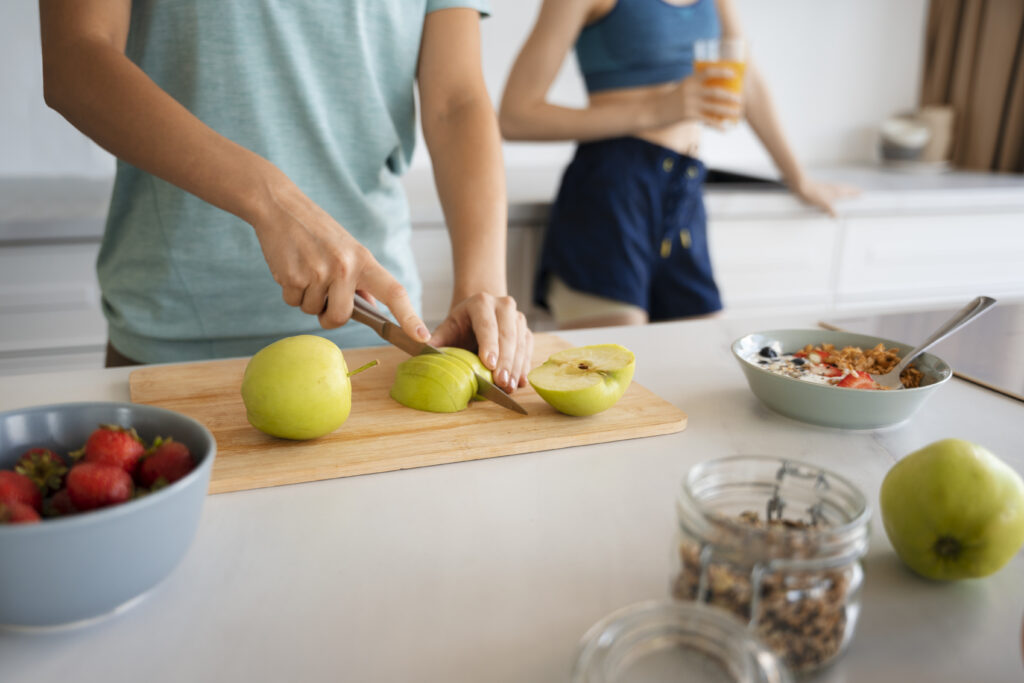
Fiber is one of my favorite nutrition topics. (I know, call me a nutrition nerd. I’m fine with that!) Fiber is one of those subjects that knows no season—it’s important for our health all year long. It’s been shown to help protect against heart disease, type 2 diabetes, some types of cancer, and diverticulitis. Among other benefits, fiber can also help with weight management efforts.
Most Americans don’t get the recommended amount of fiber, which is 25 g per day for women and 38 g per day for men. The average fiber intake in the U.S. is only about 14 g per day—far short of these recommendations. We’ve covered various aspects of fiber in this blog (see here and here). But I don’t remember focusing on fiber through a seasonal lens. So let’s remedy that, because the summer months are a great time to bump up your fiber intake. Here are my top tips for boosting fiber in the summertime.
Fiber-filled entrée salads for hot days
When I was a kid and it was really hot outside, my mother used to make a big bowl of bean, pea, and veggie salad (it also had a little ham in it). Mom was on to something—prepping a nice entrée salad earlier in the day makes dinner a breeze. And the leftovers make a great lunch or meal prep option for the next day. As a main dish, a salad needs to contain some protein and vegetables for sure. But it gets even better when you add whole grains, lentils, beans, peas, and/or seeds. Not only is the salad higher in protein from these foods, but it’s more filling and delicious, and has a lot more fiber as well. Here are a few recipes to try:
- Edamame wheatberry salad
- Mediterranean chicken salad
- Lemony lentil salad with feta
- Quinoa pesto salad
Fruit snacks for the win
The abundance of summer fruit makes it easy to choose nature’s sweet treats at snack time. In fact, the simplest snack on Earth is probably whole, seasonal fruits eaten by hand. Not just delicious since they are at their peak of ripeness, they provide fiber and a wide range of nutrients. And, if you eat a wide variety of different fruits, you’ll benefit from a greater diversity of nutrients too!
All fruits contain some fiber, but the highest fiber choices include:
- All types of berries
- Mango
- Avocado (yes, it’s really a fruit)
- Kiwi
- Apples
- Oranges
- Apricots
- Pears
- Passion fruit
- Guava
If you feel like making something with summer fruit, here are some easy options:
- Fresh fruit kebabs with lemon lime dip
- Fruit leather
- Frozen banana pops
- Old fashioned fruit crumble
- Mango shake
- Red, white and blue smoothie
Choose whole grain versions when you can
Whole grains are generally good sources of fiber, and certainly contain more fiber than their refined-grain counterparts. Whole grain foods also naturally have nutrients that refined grains lack due to processing. (Some are added back, however, hence the term “enriched” flour, etc.) It’s easy to find whole grain versions of many foods these days. Whole grain snack foods and crackers, pasta, pizza crust, bread, and cereal are plentiful on most grocery store shelves. For summertime meals, consider these ideas:
- Whole grain pasta salad for the cookout
- Whole grain crackers, cheese, and fruit for an appetizer
- Friday night whole wheat pizza on the grill
- A breakfast fruit and yogurt parfait with whole grain cereal topping
Guiding Stars gives extra credit for fiber
Do you follow the Guiding Stars nutrition guidance icons when you’re shopping? If so, you’ll be happy to know that the Guiding Stars algorithm for general foods assigns credit for fiber content. More fiber means more credit, which can translate into more stars for that product. There is also a bonus point if the product contains whole grains.